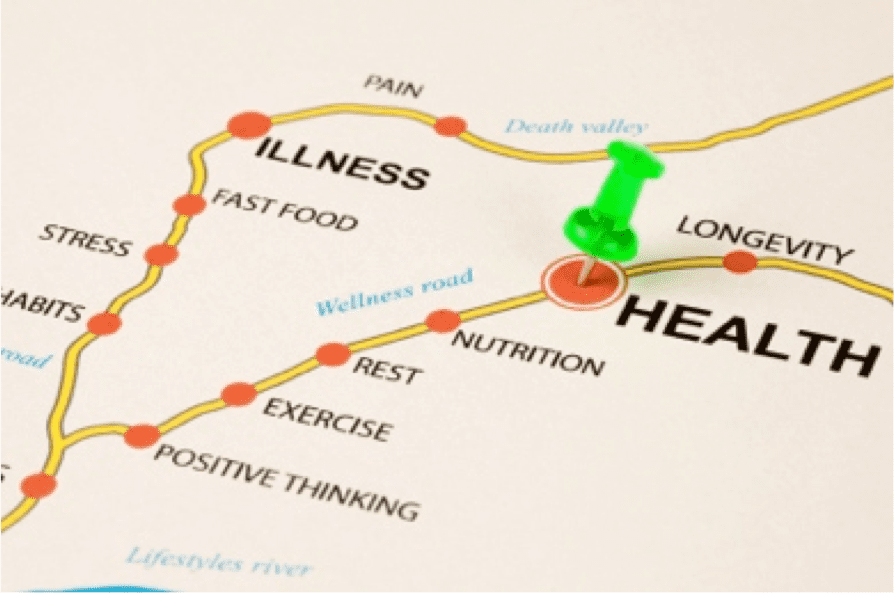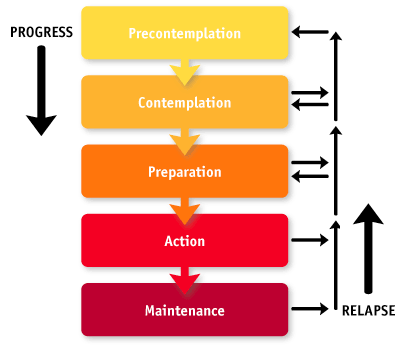This is the time of year when attempts at changing behaviour and breaking bad habits are common. The notion of a New Year’s resolution to make radical changes immediately, no matter what the area of improvement, is fraught with pitfalls. People make resolutions as a way of motivating themselves, however most people aren’t ready to change their habits, particularly if they’re bad habits. Others haven’t taken the time to create a plan for implementing the change, and their goals could be unrealistic to begin with.
Essentially, when we talk about creating new habits, we’re talking about changing our behaviour to the point at which the new behaviour becomes automatic.
I’ve been thinking about my own experience with this. As I go about my day, I contemplate which behaviours come easily or automatically and which ones I have to make a conscious effort to do.
Let’s go back in time. It was 2 years ago that I made a resolution to floss my teeth. I did well for the first couple of months but then faltered to only doing it part time. In 2014, I renewed the same resolution to floss more. It worked. I attribute this to three factors:
- I was already practicing the behaviour part time, so increasing a behaviour that I was already doing wasn’t as hard as implementing a new behaviour.
- During 2013, I learned about flossing before brushing my teeth rather than afterwards, and it made a whole lot more sense to me to first loosen food particles before trying to brush them away. Since then, I’ve been embarrassed about not knowing this before, like maybe I’m the only one that was taught as a child to floss after brushing, not before. But let’s get back on track – I think creating more meaning and logic added value to performing that behaviour.
- The last thing I changed was moving the dental floss from a drawer to the counter in front of my toothbrush. I now see the floss first and would actually have to skip over the floss to pick up my toothbrush.
I think you get the picture now. A year later, I’m still flossing on a daily basis 7 out of 7 days per week. Success! But wait, is this a habit for me? I have to really think before I answer. By definition, I don’t think it is, because I do still have to think about it. I see the floss and I say to myself, “Right, I need to floss first.” I’m left thinking about how long it ACTUALLY takes to create a habit and what pieces of this process I’m potentially missing out on.
Let’s move on and discuss how to set goals that might lead us to success more than we’ve experienced in the past.
One of the more popular theories for changing behaviour is called The Stages of Change Model, developed by James Prochaska and Carlo DiClemente at the University of Rhode Island in the 1970’s and 80’s when they were studying how smokers were able to give up their habits or addictions. The following diagram depicts the model, with Stage 1 being Precontemplation and Stage 5 Maintenance.
Sometimes Relapse is considered Stage 6, at which point you could end up anywhere from Stage 1 – 4 again .
In order to see success with change, each stage is a pre-requisite for the one following it, which could explain why some resolutions fail. People tend to go from Contemplation straight to Action, without Preparation. The Preparation stage is crucial for long term behaviour change success, and it’s the stage where goal setting occurs.
Let’s say I set a goal to “drink more water”. Is that a goal that I’ll have success with? It’s a very vague goal and not very specific, so maybe not. Have you ever heard of SMART goals? SMART is an acronym for Specific, Measurable, Attainable, Relevant, and Timely (or Time-Bound). Following the guidelines of creating SMART goals leads to greater long term success with goals for behaviour change and new habits.
Let’s go through an example of how to create a SMART goal for increasing hydration. I’ll use myself, and I’ll set a goal to drink more water.
Specific – remove ambiguity and avoid being vague, and phrase the goal in a way that answers the 5 W’s: who, what, where, when, and why.
“I will increase to drinking 3 litres of water each day by March 1st to aide digestion and improve the look of my skin.” This satisfies the 5 W’s.
Measurable – what does success in this goal look like and how will we know the goal’s been accomplished? Use a measurement tool to track progress. Don’t aim for 100% compliance as this may be unrealistic.
Success will be drinking 3 litres of water each day. A good measurement tool could be to highlight each day on a calendar that I reach my water intake. Success to me will be reaching my water intake goal 5 out of 7 days each week. Measuring out my water into pitchers and re-usable bottles in the morning can help me be organized for the day.
Attainable – confidence in reaching the goal leads to a greater chance of success, but setting the goal too easy isn’t effective either, because progress would be too slow and it might become boring if it’s not challenging enough. Rank your confidence on a scale of 1-10, where 10 means to goal is easy to achieve. Try to set a goal so that your confidence is at an 8 or 9.
For this goal, going from my current intake of 1 litre of water per day straight to 3 litres per day overnight might be too challenging. I feel like I’m at a confidence level of 6 for that. However, slightly increasing intake on a weekly basis feels like a better way to get to 3 litres over time. The difference between 1 litre and 3 litres is 2 litres or 8 cups. I have set my goal for drinking 3 litres by March 1st. If my start date is January 1st, then I have about 8 weeks to increase my intake to get to 3 litres. Some easy math tells me that increasing my daily intake by 1 cup each week will get me there. Now I feel my confidence level is at an 8.
Relevant – how much value does this goal create and how relevant is it to happiness?
This goal will help me with clearer skin and may assist with some digestive issues I’ve been having trouble with lately. It’s pretty relevant to me.
Timely – set a deadline for check-in and ensure comfortability with the timeline for success.
Tracking on a calendar will show me success on a daily basis, and I can see if I’m reaching my intake at least 5 out of 7 days. If I’m consistently not reaching my intake on too many days over a few weeks, then the goal may be too hard and I should adjust it to make it attainable. If weekly progress is good, then March 1st is an effective deadline.
SMART goals can be useful for setting almost any kind of goal, be it saving money, going to the gym, cooking at home versus eating out, or setting aside time to meditate. Some other helpful tips for setting goals are:
- focus on one goal at a time
- don’t play along with “cultural procrastination” by starting to work towards your goal on New Year’s Day or “next Monday” – start as soon as your plan is ready
- write it down in a special place
- review it daily by posting it on the bathroom mirror or refrigerator
- add a picture to your written goal
- have someone you’re accountable to that can support you in reaching your goal
- celebrate small successes along the way
- stay positive and remember that even results that don’t equal what success means to you still qualify as overall progress towards your goal in comparison to your pre-goal behaviour
- start small and let many small changes add up to large change over time
See the resources section below for suggested reading on two different habit theories: Habit Loop and Tiny Habits that can be done on their own or as part of a SMART goal.
Randi Hawley is a Nutritionist and Group Exercise Instructor living in Edmonton. Her work empowers her fellow humans to be engaged in making positive sustainable changes in their health and wellness. She can be reached at realfoodwellnessyeg@gmail.com.
References
SMART Goals: http://en.m.wikipedia.org/wiki/SMART_criteria
Habit Loop: http://charlesduhigg.com/how-habits-work/
Tiny Habits: http://tinyhabits.com









